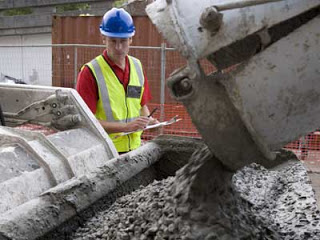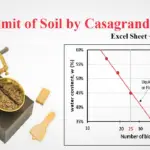Here’s a simple cement concrete calculator that helps you find the mix design quantity of various grade of concrete, follow these steps:
Enter the values for the length, width, and height of the cement concrete in meters.The calculator will display the volume of the cement concrete in cubic meters and the weight of the cement concrete in kilograms.
That’s all there is to it! The calculator will automatically perform the calculations and display the results for you. I hope this helps! Let me know if you have any other questions.
Volume of concrete: cubic meters
Wet volume of concrete: cubic meters
Quantity of cement: bags
Quantity of sand: kg
Quantity of aggregate: kg

What is RCC Calculation:
Plain Cement Concrete (PCC) is a type of concrete that is made by mixing cement, fine aggregate (such as sand), and coarse aggregate (such as gravel or crushed stone) with water. PCC is a simple and economical form of concrete that is commonly used as a base layer or as a foundation for other construction materials.
Like Us on Facebook!
Reinforced Cement Concrete (RCC) is a type of concrete that is made by adding steel reinforcement bars (rebar) to the mixture of cement, fine aggregate, and coarse aggregate. The steel reinforcement is used to increase the tensile strength and ductility of the concrete, making it more resistant to cracking and deformation under stress. RCC is often used in the construction of bridges, buildings, and other structures that are subject to high levels of stress and strain.
Subscribe Us on YouTube!
There are several different grades of concrete, each with its own specific mix ratio of cement, fine aggregate, coarse aggregate, and water. The mix ratio is the proportion of each of these ingredients that is used in the concrete mix. The strength of the concrete is measured in terms of its compressive strength, which is the maximum load that the concrete can withstand before it fails. The compressive strength of concrete is usually measured after it has cured for 28 days.
The most commonly used grades of concrete are M10, M20, M30, M40, and M50. The letters “M” stand for “mix,” and the numbers refer to the compressive strength of the concrete in kilograms per square centimeter (kg/cm2). For example, M10 concrete has a compressive strength of 10 kg/cm2 while M20 concrete has a compressive strength of 20 kg/cm2. The mix ratio for each grade of concrete is different, and is typically specified in terms of the ratio of cement, fine aggregate, coarse aggregate, and water that is used.
How to calculate Cement Concrete Quantity?
The mix design ratio of concrete refers to the proportions of cement, fine aggregate (such as sand), and coarse aggregate (such as gravel or crushed stone) that are used in the concrete mix. The ratio is typically expressed in the form of a set of numbers separated by colons, such as 1:2:4.
In the mix design ratio 1:2:4, the first number (1) refers to the proportion of cement in the mix, the second number (2) refers to the proportion of fine aggregate, and the third number (4) refers to the proportion of coarse aggregate. For example, a mix design ratio of 1:2:4 would indicate that the concrete mix contains 1 part cement, 2 parts fine aggregate, and 4 parts coarse aggregate.
To calculate the quantity of cement, sand, and aggregate for a required quantity of concrete, you will need to know the mix design ratio of the concrete and the volume of concrete required. The following steps can be used to calculate the quantities:
- Determine the volume of concrete needed: The volume of concrete is calculated based on the length, width, and height of the area where the concrete will be poured. For example, if the length is 10 meters, the width is 5 meters, and the height is 0.1 meters, the volume of concrete needed would be 10 * 5 * 0.1 = 0.5 cubic meters.
- Determine the mix design ratio: As mentioned above, the mix design ratio is a set of numbers that represents the proportions of cement, fine aggregate, and coarse aggregate in the concrete mix. For example, a mix design ratio of 1:2:4 indicates that the mix contains 1 part cement, 2 parts fine aggregate, and 4 parts coarse aggregate.
- Calculate the weight of each ingredient: The weight of each ingredient can be calculated by multiplying its proportion in the mix design ratio by the volume of concrete needed. For example, if the volume of concrete needed is 0.5 cubic meters and the mix design ratio is 1:2:4, the weight of cement would be 1 * 0.5 = 0.5 kilograms, the weight of fine aggregate would be 2 * 0.5 = 1 kilograms, and the weight of coarse aggregate would be 4 * 0.5 = 2 kilograms.
- Determine the volume of each ingredient: The volume of each ingredient can be calculated by dividing its weight by its density. The density of cement is typically around 1440 kilograms per cubic meter, while the density of sand and aggregate is typically around 1600 kilograms per cubic meter. For example, if the weight of cement is 0.5 kilograms and its density is 1440 kilograms per cubic meter, the volume of cement would be 0.5 / 1440 = 0.000347 cubic meters.

















